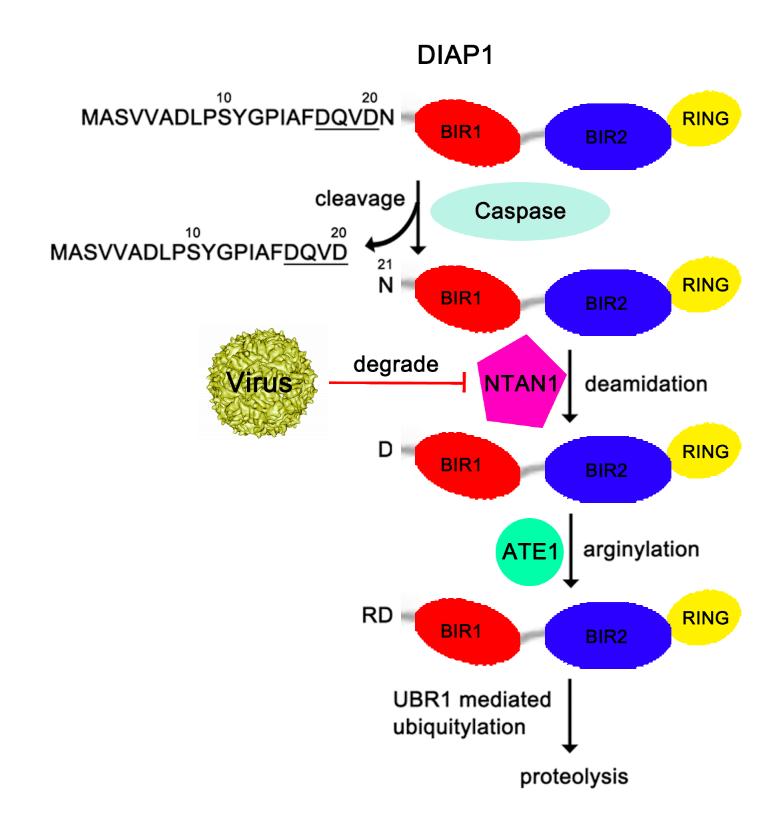The N-end rule pathway is a proteasome dependent proteolytic system that recognizes and degrades proteins containing N-degrons, and has emerged as a key regulator of various processes. Viruses manipulate diverse host pathways to facilitate viral replication and evade antiviral defenses. However, it remains unclear if viral infection has any impact on the N-end rule pathway.
In a present study led by Prof. ZHOU Xi in Wuhan Institute of Virology of Chinese Academy of Sciences, the researchers report that the infection by a picorna-like virus can induce apoptosis in infected Drosophila cells, and the apoptotic pathway plays an antiviral role in Drosophila. Intriguingly, they found that the viral infection promoted the accumulation of caspase-cleaved, smaller form of DIAP1, which is potent for apoptosis inhibition, by inhibiting the N-terminal Asn deamidation of the cleaved DIAP1.
Moreover, they uncovered that the viral infection could induce the degradation of NTAN1, which catalyzes the N-terminal Asn deamidation of the cleaved, smaller DIAP1. And the virus-induced NTAN1 degradation is independent of polyubiquitylation but dependent on proteasome. Furthermore, their study revealed that the virus-induced N-end rule pathway suppression could efficiently block apoptosis and facilitates viral replication.
In summary, their findings demonstrate for the first time that a virus can suppress the N-end rule pathway, and uncover a new mechanism for virus to evade apoptosis. Given the high conservation of the N-end rule pathway from prokaryotes to eukaryotes, it opens up the possibilities that this mechanism can be also employed by other viruses, particularly picornaviruses, to evade apoptosis and/or modulate other cellular processes, which are the targets of N-end rule pathway, in mammals or other organisms.
The results have been published in eLIFE entitled "A Picorna-like Virus Suppresses the N-end Rule Pathway to Inhibit Apoptosis".
This work was supported by the National Natural Science Foundation of China - Excellent Young Scientist Fund, the NSFC grant, the Newton Advanced Fellowship from the UK Academy of Medical Sciences and NSFC, the Strategic Priority Research Program of Chinese Academy of Sciences, the National Basic Research Program of China, the National High-Tech R&D Program of China, the Natural Science Foundation of Hubei for Distinguished Scientist, and the National Science Foundation for Post-doctoral Scientists of China.

Viral infection inhibited the N-terminal Asn deamidation of cleaved DIAP1. Image by ZHOU Xi
Contact:
ZHOU Xi
E-mail: zhouxi@wh.iov.cn
Wuhan Institute of Virology, Chinese Academy of Sciences, Wuhan 430071, China (http://english.whiov.cas.cn/)